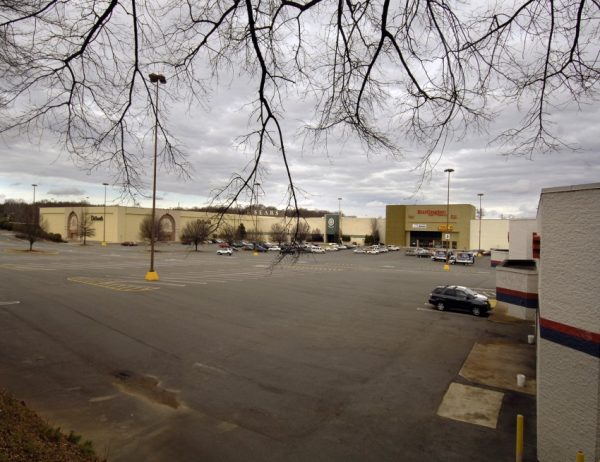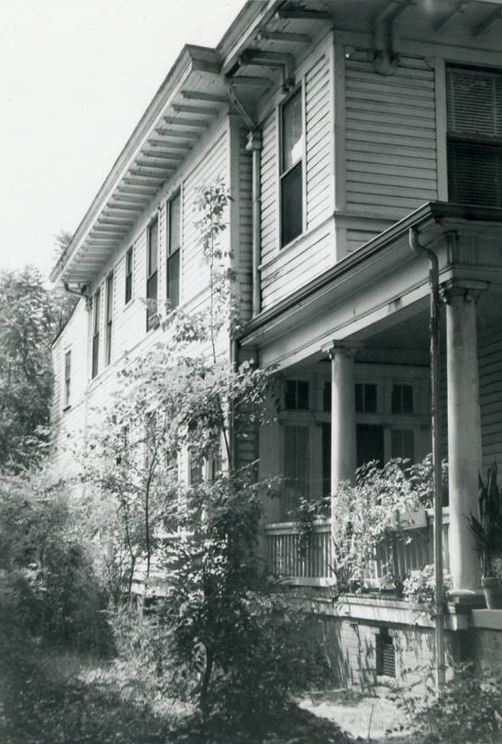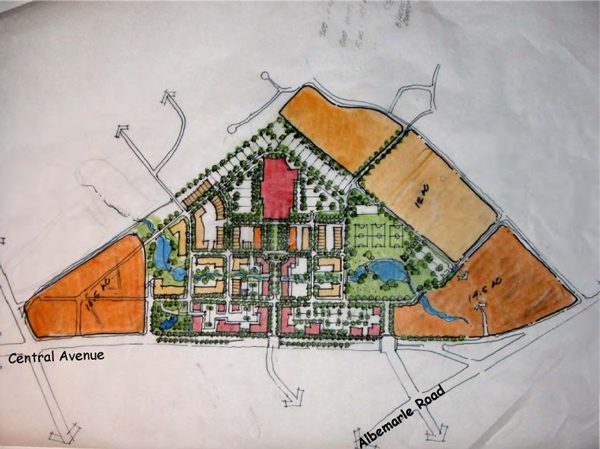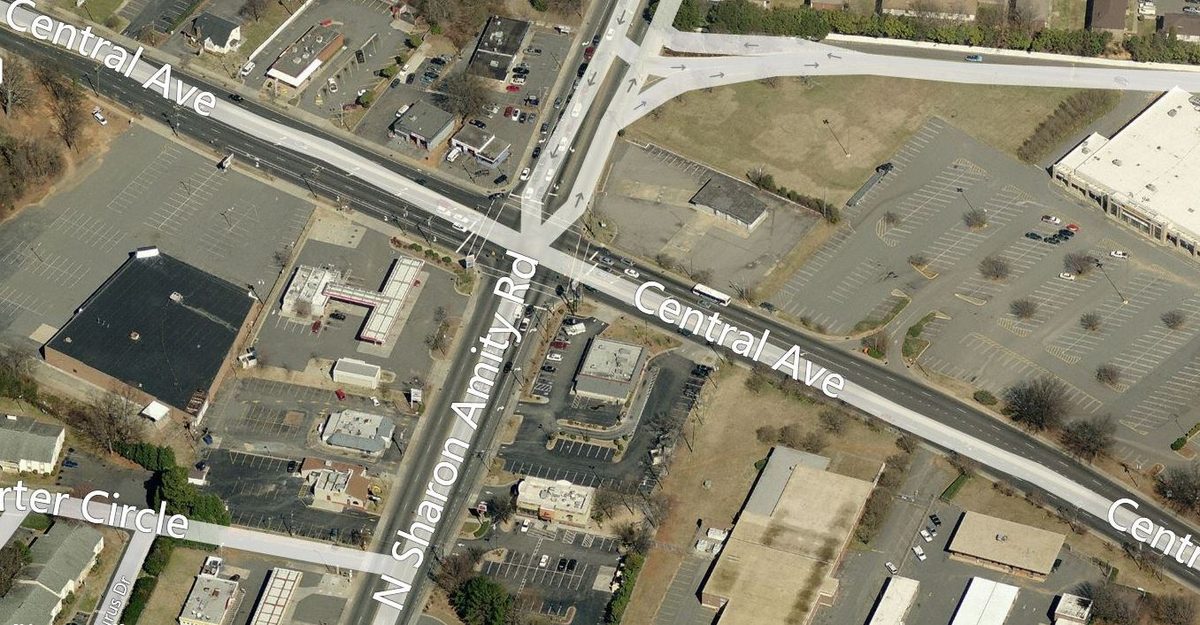Charlotte hits pivot point in vision for Eastland property

The old photo shocked me. I was researching Charlotte’s urban renewal, and amid faded images of long-demolished homes in and around uptown was a large old house on Dilworth’s now-affluent East Kingston Avenue. But in the 1960s parts of Dilworth were considered blighted.
Dilworth was not demolished for urban “renewal.” Instead, young Baby Boomers moved in, seeking in-town locations and older houses. In a few decades it renewed itself slowly, a piece at a time. A similar organic renewal revived Elizabeth, Plaza Midwood, Chantilly and NoDa, and is happening today in neighborhoods including Commonwealth-Morningside, Merry Oaks and Country Club Heights.
In a few decades it renewed itself slowly, a piece at a time. A similar organic renewal revived Elizabeth, Plaza Midwood, Chantilly and NoDa, and is happening today in neighborhoods including Commonwealth-Morningside, Merry Oaks and Country Club Heights.
Notice the lack of expensive, government-aided “catalyst” projects. Which brings us to Eastland Mall.
Does that derelict mall really need, as so many people seem to believe, a redevelopment Big Bang? Further, is the city about to undercut its own Eastland investment and vision – and its hopes for eventually seeing streetcar-sparked renewal – by approving a new gas station-convenience store proposed next door?
Eastland, an enclosed regional shopping mall, opened in 1975 and flourished for 15 years. But east Charlotte changed. More people of color arrived, including many immigrants from Latin America and Asia. Compared to areas near SouthPark and Carolina Place malls, the demographics and income levels did not appeal to major chain retailers, who either left completely or moved farther out Albemarle Road, as the city willingly rezoned land to accommodate their moves. The mall’s anchor tenants bled away. In 2010 it closed for good. Then it sat, deteriorating.
In 2012, the Charlotte City Council bought most of the mall property, 80 acres, for $13.2 million in hopes of selling it off, rather than let its deterioration drag down surrounding property values.
The city sought a developer to build a “catalytic” project. Two developers bid. One proposed a $51 million entertainment/activity center but backed out. In March, the remaining developer, who would have gotten the land for $1 a year for a film-studio project, parted ways with the city. Now the city staff is studying what happens next.
I talked this week with City Council member John Autry, whose district includes Eastland and who wants to see the mall spark redevelopment. “It’s got to be big, it’s got to be bold, and it’s got to be transformative,” he said. “That’s what I’m looking for, what I want to support.”
That belies the lessons from the past. Neighborhood transformation here has been incremental, organic, and slow. The idea that a ginormous film studio – or any megaproject landing on the old mall acreage like a NASCAR Hall of Fame or any other white elephant – would create long-term value is out of step with the evidence. Understandably, east Charlotte neighbors are tired of seeing their part of town passed over for big city investments. But the chances that a mega-project will solve their problem are not strong.
As it happens, the city staff is rethinking the Big Bang approach. “Eighty acres seemed to be a lot to digest for any one developer,” the city’s economic development manager, Brad Richardson, told me in an interview. Instead, they’re looking at subdividing the land into smaller pieces and selling them separately.
 That approach probably has a better chance for success, but with a big” if” – if the city is more visionary and less passive in working to accomplish its ultimate goal of helping east Charlotte.
That approach probably has a better chance for success, but with a big” if” – if the city is more visionary and less passive in working to accomplish its ultimate goal of helping east Charlotte.
Remember who owns the land? Why wait for developers to propose things? The city should create a strong plan and strategically ensure that it gets followed. How to do this?
Want to know more? |
- Streets. The city owns the land, so nothing should stop it from designing a city street network. After all, buildings may come and go, but a street system endures for centuries. It should have on-street parking, sidewalks, bike lanes, street trees.
- Public space. Uncover and protect the now-buried creek, with a park and greenway.
- Neighborhood design. Design the proper placements for houses, apartments and stores/restaurants, to create a city-style neighborhood, with places near enough to walk or bike to. Rezone the land to allow it. (If a property-buyer later wants a rezoning, fine – consider its merits as with any other rezoning request.)
- Beautify. Require good design of buildings and streets, and forbid huge surface parking lots or land-wasting suburban berms.
- Patience. For it to happen right, it will probably happen in phases. That is OK. Unlike a developer with loans that come due, the city can have “patient money.”
But this vision – or even a huge catalyst megaproject – is threatened from the outset. At the northeast corner of the Central-Sharon Amity intersection, an unused* lot next to the mall is being proposed for a – wait for it! – gas station/convenience store. (Read more about that rezoning request here. The public hearing is July 21.)
Now I confess to using gas stations and convenience stores. Most of us do. And this proposed gas station would be newer and nicer looking (for a while, at least). The developers have talked to the neighbors and been willing to make cosmetic enhancements. As Autry noted, it’s positive when any developer wants to build something new in the area.
But it’s not as if the area lacks gas station-convenience stores. One is across the street, another a half-block beyond.

A second corner offers a Burger King with Taco Bell next-door. At the third: Elvis Automotive and Porky’s Auto Repair shops.
Three of four corners are auto-dominant, one-story, decidedly downscale uses. Pavement and parking lots already consume the area. Why add more routine, thoughtless suburbia?
Finally, Eastland Mall is on a rail transit route – the GoldLine streetcar, its first phase almost built. Streetcar supporters (Autry included) tout its potential to lure better development. Will the city, nevertheless, wave into being at a major intersection a decidedly non-transit-friendly project?
The city hopes to encourage a stronger, better neighborhood. Whether it sells the mall property for a yet-undefined Sexy Upscale Catalyst project or for the less sexy urban village I propose above, how does adding more suburban schlock next door enhance the public’s investment and further city goals?
Answer: It doesn’t.
Mary Newsom is associate director of the UNC Charlotte Urban Institute. Opinion pieces reflect the opinions of the author and not necessarily those of the UNC Charlotte Urban Institute or the University of North Carolina at Charlotte.
* Correction, June 30: An earlier version of this article characterized the lot as vacant. It isn’t; an unused building occupies part of the property.